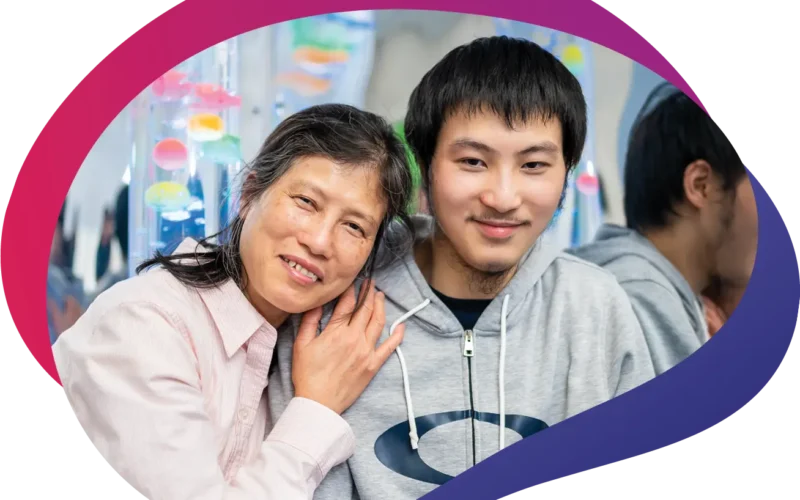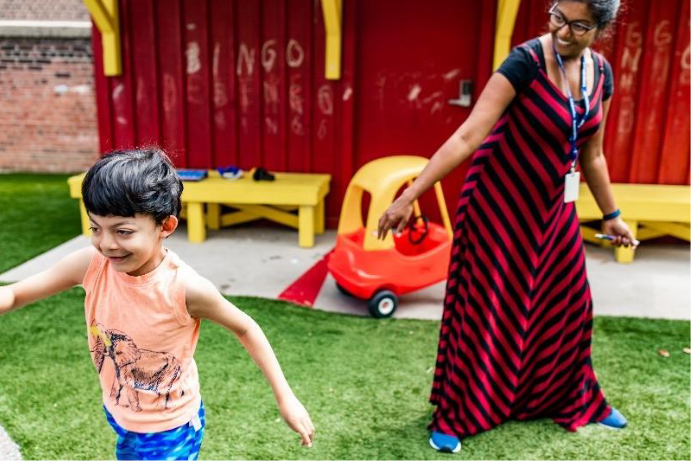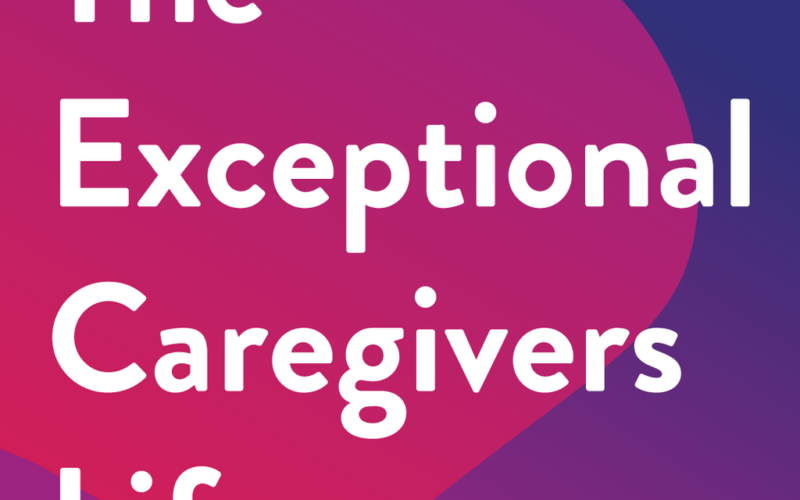A Conversation with Lindsay “Swooping Hawk” Kretschmer
June is National Indigenous History Month, a time to reflect on the importance of listening and engaging with First Nations, Métis and Inuit peoples across Canada.
Surrey Place is committed to increasing Indigenous inclusivity, indigenizing our practices, and building Indigenous partnerships to better work with and serve Indigenous people and communities.
In honour of this special time of year, we sat down with Lindsay “Swooping Hawk” Kretschmer, Indigenous Strategic Advisor on Indigenous inclusion and reconciliation at Surrey Place, and Executive Director of the Toronto Aboriginal Support Services Council.
Thanks for chatting with us, Lindsay! Can you tell us more about National Indigenous History Month and why it’s important to learn about Indigenous peoples’ history?
Lindsay: National Indigenous History Month, which includes National Indigenous Peoples Day on June 21, is a time to commemorate and celebrate the First People of this land. It is a time to learn, unlearn and acknowledge our original relationships, agreements, treaties and to deepen our collective awareness about the key historical issues Indigenous people in Canada have faced. We are not a people of the past, but rather a vibrant and present people. This month creates space and brings prominence to the rich contemporary cultures of First Nations, Métis and Inuit today and encourages each of us to be good allies.
We know that language matters. When is it appropriate to use Indigenous or Aboriginal?
Lindsay: The terms used to describe the First People of this land have shifted over time. We were once referred to as “Indians,” a term which many believe to have derogatory connotations. Later, the Government of Canada settled on the word “Aboriginal,” which by many accounts is used to describe the “original occupants”, though in 2021 we find ourselves leaning toward the word “Indigenous,” which for many is more widely accepted.
What lessons can we learn from Indigenous cultures?
Lindsay: The three primary Indigenous groups recognized in Canada are First Nations, Métis and Inuit. We are a collective of many diverse and sovereign nations, cultures, languages, locations, histories, customs and identities. We must first recognize that no two Indigenous cultures, languages, customs, histories, geographies are the same. However, we do share some common values and world views. We regard each living being as having an important role in the cycle of life, and so we see ourselves as equal, in balance and in harmony with all living things. We have always known that caring for each other, the land, waters, plants, animals, and more is how we could maintain and restore balance with all of Creation and respect for our first mother, the earth. This ideology comes from many generations of seeing, being, knowing and understanding the sacredness of the connection. While difficult to maintain in a modern or urban context, we endeavour to try by walking softly for those future generations yet to arrive, so they do not have to be the caretakers of a mess we leave behind.
“Lastly, many of us share the view that every person is born with unique and natural gifts, and this help guide us on our journeys toward understanding our roles, responsibilities, and common purpose. We are reminded to express gratitude often, to be kind, honest and to be mindful of reciprocity in all its forms.”
How can non-Indigenous people support Indigenous peoples in our community?
Lindsay: There are a couple of steps you can take:
- Be a good human. Pure and simple. Suspend judgement and be open and willing to listen and learn with not only your minds but your hearts.
- Forget everything they told you. Many of us have been trained to respond with the brain, not the heart and spirit, and these are not mutually exclusive. To truly connect with any human or living being, you must be willing and able to do so on a spirit to spirit and heart to heart level. The mind, body and spirit are interrelated, and connection must occur by way of all three in harmony.
- Commit to re-learning and un-learning. Canada failed generations across an entire nation on the true history of Canada. We must work twice as hard to commit to a journey of learning that de-conditions our thinking and expands our minds to see the truth through the eyes and experiences of Indigenous peoples.
At Surrey Place, we support children with developmental disabilities. What is Jordan’s Principle, and why is it important?
Lindsay: Jordan’s Principle is named in memory of Jordan River Anderson. He was a young boy from Norway House Cree Nation in Manitoba who was the subject of a jurisdictional dispute between governments who opted to wrangle the financial responsibility of a child’s well-being rather than put the child first. This resulted in the untimely death of Jordan, who, like so many other Indigenous children across Canada, was failed by a discriminatory system that treats children of Indigenous descent differently because of “who they are.”
In honour of Jordan River Anderson, the First Nations Child and Family Caring Society, led by child advocate Cindy Blackstock, pushed the federal and provincial governments to create legislation that honours and recognizes the distinct needs and rights of First Nations children. From these hard-fought efforts, Jordan’s Principle was born.
Jordan’s Principle ensures all First Nations children living in Canada can access the products, services and supports they need, when they need them. Funding helps with a wide range of health, social and educational needs, including the unique needs that First Nations Two-Spirit and LGBTQQIA children and youth and those with disabilities may have. To learn more, visit Surrey Place’s Resource Library.
You have been working with Surrey Place for the past year – can you tell us about the focus of your work?
Lindsay: I have been supporting Surrey Place in training and advising roles for nearly three years. I work with the tremendous people at Surrey Place toward creating space for greater inclusion. We have trained over 460 staff to date, including the Board of Directors on indigenous awareness. I am filled with gratitude for the opportunity to work with such amazing people at Surrey Place.
Thank you for sharing, Lindsay. Any final thoughts?
Lindsay: It’s my pleasure. I’d like to add that while the steps towards Indigenous inclusion and reconciliation may seem small, changemaking of this magnitude takes time. I believe fully in the process, but more importantly, the people and the commitment that is guiding us on this journey together. We will get there together, and we will do so with love, compassion, understanding and great humility.
Nia: Wen Kowa
To learn more about Surrey Place’s commitment towards Indigenous inclusion and reconciliation, read this statement from Terri Hewitt, our CEO.


